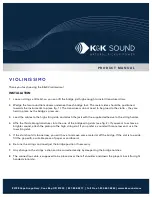
AP301-FULL-HD_rev.09_UK
34
7.3.
MEASUREMENTS IN OFDM (DVB-T/T2)
OFDM is the name of the transmission system adopted in Europe for the transmission of
digital television signals over the air. The features of this system can be summarized by the
following:
•
Occupation of a channel frequency equal to that of the current analogue transmissions.
•
Transmission of various programs with different resolutions over a single channel,
indicatively from four of good quality to eight of reduced quality, with possible
intermediate combinations.
•
Reduction of the power required for the transmitters.
•
Particular strength in relation to echoes and multipathing.
•
Possibility of transmitting in optimized mode in order to allow for reception on behalf of
systems with fixed antennas on the roof or internal antennas, or mobile vehicular
systems.
•
Facilitates data transmission of any kind, like program menus, different simultaneous
audio channels and subtitles in different languages.
OFDM is characterized by the simultaneous transmission of a large number of carriers (two
thousand or eight thousand), each with its own digital modulation. The carriers are actually
not generated and modulated individually: mathematical algorithms are used to generate
the modulation for the carrier, which is initially only one, so as to synthesize the final
complex signal. An algorithm in the receiver is even capable of breaking down the incoming
signal into the various carriers of which it is comprised and then decoding them.
7.3.1.
CH BER, POST VITERBI BER and BCHBER
The measurements of the OFDM signal received are sub-divided into:
CH BER, measurement of the errors carried out immediately prior to the correction stages.
POST VITERBI BER, (only for the DVB-T standard) measurement of the errors after the
“Viterbi” correction stage.
BCHBER, (only for the DVB-T2 standard) measurement of the errors after the “LDPC”
correction stage (low density parity check).
For the checks in a reception system, CH BER is the most important measurement.
Approximately, for a good system which is maintained over time (ageing of components,
thermal drifts) and based on weather conditions (attenuation by snow, rain) the initial
conditions to be obtained could be:
CH BER better than 1E-3 (better than one error out of 1.000),
value measured at
the user outlet.
CH BER better than 1E-5 (better than one error out of 100.000),
value measured
at the head unit output.
7.3.2.
MER in OFDM
MER
(Modulation Error Ratio) is a measurement expressed in dB that refers to the quality
of the demodulated signal.
The MER is similar to the Carrier-Noise (C/N) ratio of an analogue signal, measured in base
band.
It must therefore not be confused with the C/N measurement, which is carried out on the
Radio Frequency carrier.
















































